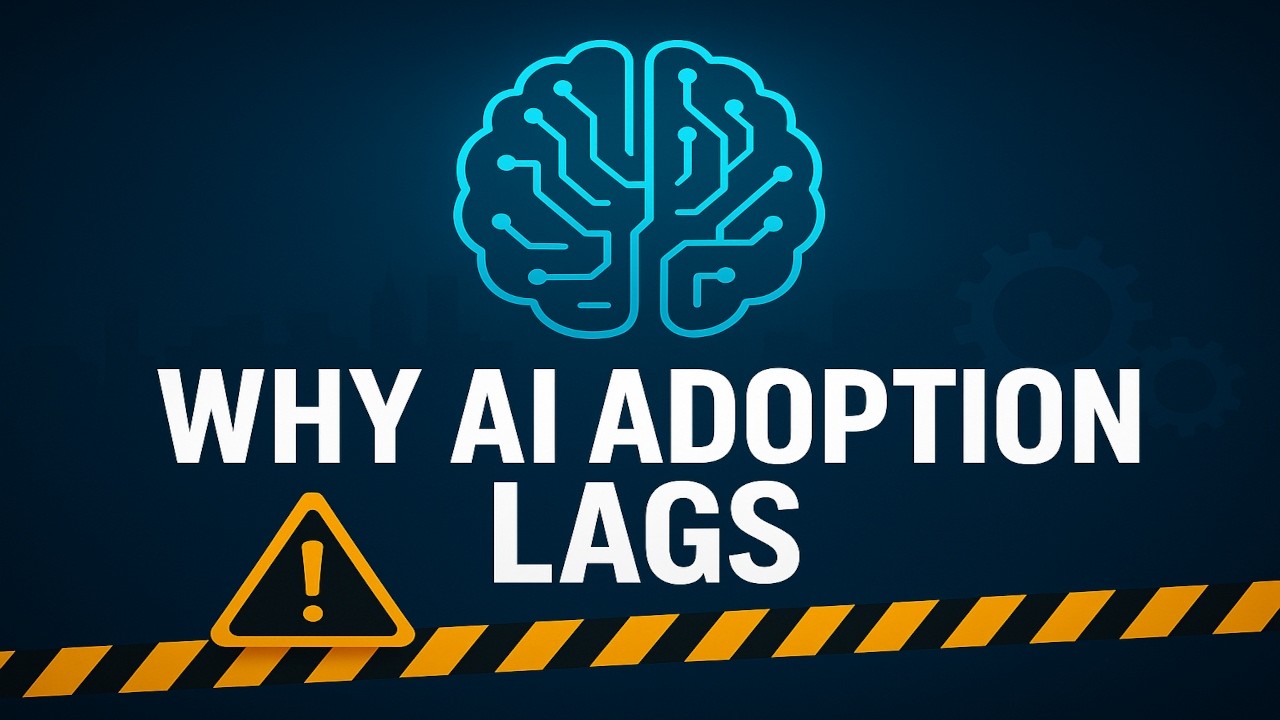David Shapiro explains that AI adoption in businesses is slower than expected due to challenges in scaling solutions, measuring clear ROI, and shifting bottlenecks, with the most success coming from focused projects that automate high-cost processes and capture real capacity gains. He also emphasizes the importance of human-centric approaches, continuous bottleneck management, and strong governance to ensure responsible, effective, and sustainable AI integration.
In this update, David Shapiro discusses the current state of generative AI adoption in businesses, highlighting why it is progressing both faster and slower than expected. He explains that while many C-suite executives and boards recognize AI as essential for future viability, most companies have yet to see significant bottom-line impacts from their AI investments. This disconnect stems largely from challenges in scaling AI solutions, proving return on investment (ROI), and defining key performance indicators (KPIs). Shapiro draws parallels to past technological shifts like the internet and cloud computing, noting that AI is still in its early adoption phase where companies are figuring out how to effectively use it.
One major bottleneck Shapiro identifies is the difficulty in measuring AI’s business value. Many AI projects face abandonment because their benefits are unclear or hard to quantify. He distinguishes between two types of AI deployments: horizontal AI, which involves broad tools like chatbots or co-pilots given to many employees, and vertical AI, which targets specific high-value processes for automation. While horizontal AI can improve productivity in small ways across many tasks, it often lacks clear ROI. Vertical AI projects, though potentially transformative, frequently get stuck in pilot phases due to scalability issues and challenges handling exceptions.
Shapiro emphasizes that the most impactful AI wins come from focused, targeted projects—“spear” initiatives—that automate high-cost, well-understood bottlenecks within organizations. He cites examples like JP Morgan’s COIN system for legal contract review and Novo Nordisk’s Norvoscribe for regulatory report creation, which drastically reduce time and labor. However, he cautions that time saved is a vanity metric unless that saved capacity is reinvested productively. The true measure of success is “capacity captured,” or how much effective work output increases through AI augmentation.
Another key insight is that AI often shifts bottlenecks rather than eliminating them. For instance, GitHub Copilot made developers faster at writing code, but code review times then became the new bottleneck. This “bottleneck shifting” means organizations must continuously identify and address new constraints to realize ongoing gains. Shapiro also highlights the importance of keeping AI human-centric by focusing on employee satisfaction, burnout reduction, and talent retention as valuable but harder-to-measure outcomes that contribute to long-term success.
Finally, Shapiro points out that governance—led by CFOs, legal, and HR officers—is a critical gatekeeper in AI adoption. These stakeholders demand clear proof of value, ethical compliance, and risk management before fully endorsing AI initiatives. While sometimes seen as obstacles, their role is essential to ensure responsible and sustainable AI deployment. Overall, Shapiro’s research underscores that AI adoption is a complex journey requiring targeted projects, rigorous measurement, continuous bottleneck management, human-centric approaches, and strong governance to unlock its full potential.
